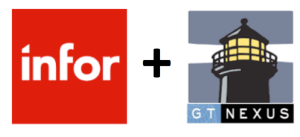Earlier this month I was in sunny Florida at the Demandware XChange conference. A gathering of some of the biggest retail brand names – the likes of Cole Haan, Carter’s, vineyard vines, Party City to name a few, also spent time with me in Florida. With over 1400 attendees representing 600 customers, the event attracted a wide swath of brands and retailers.
The biggest message from the event was the dominance mobile has taken on in the retail world. This is something that has long been resonating in the space. When it comes to connecting with the consumer, the mobile phone is firmly entrenched as the de facto touch point. No surprise since many would rather lose their wallet rather than their iPhone. Therefore it is imperative for retailers to focus on the phone to be central to their consumer facing focus. The main takeaways from the event:
- Mobile is the thread that ties in commerce: Mobile phones are always with us – they are the one constant within the commerce ecosystem. This is specific to mobile phones, as tablets are not regarded as “mobile” but more along the same lines as computers. Retailers need to focus on a mobile first strategy. Retailers need to keep in mind that mobile is not simply about reaching conversions via that form factor – rather that mobile plays a role with regards to influencing conversions regardless of where they take place. Conversations between the brand and consumers via mobile can drive conversions – regardless if they are happening on that phone or via a physical store and even through a non-mobile web site.
- Don’t ignore important signals your customers are throwing off: There was a time when abandoned shopping carts were viewed with disdain. While retailers still want to see the highest percentages of shopping carts converted, there is some interesting information to be gathered from what products your consumers place in their shopping carts and why they don’t convert. Savvy retailers are looking at these actions by consumers and learning from them. There is also an opportunity to learn from you consumer’s social actions. Tying in buying functions with social sites such as Pinterest, allows retailers to take advantage of how their consumers’ are behaving and interacting. The lesson – find places where your consumer is sharing insights, ideas and potential demands and figure out how to take advantage of this data.
- Don’t forget the store labor! A major theme we have seen with retail is the growing importance of labor within the commerce ecosystem. Brands such as Party City are leaning on in store technologies to empower their store associates. Not only for more frictionless interactions between store associate and consumer, but also how to better handle inventory. The labor also needs to lean on the mobile access to information and data. Retailers such as Party City lean on seasonal pop up stores to drive sales around such events such as Halloween. The need for a mobile and flexible in store solution is even more imperative to keep up with these changing retail delivery points.
Demandware and their customers are focused on some key topics facing retailers – all focused on the importance of mobile. The question remains how much can the fulfillment side of the retail supply chain weave into this mobile strategy? As consumers continue to influence the retail supply chain, retailers will also need to adopt a more flexible and responsive fulfillment strategy to integrate with their mobile strategy.

